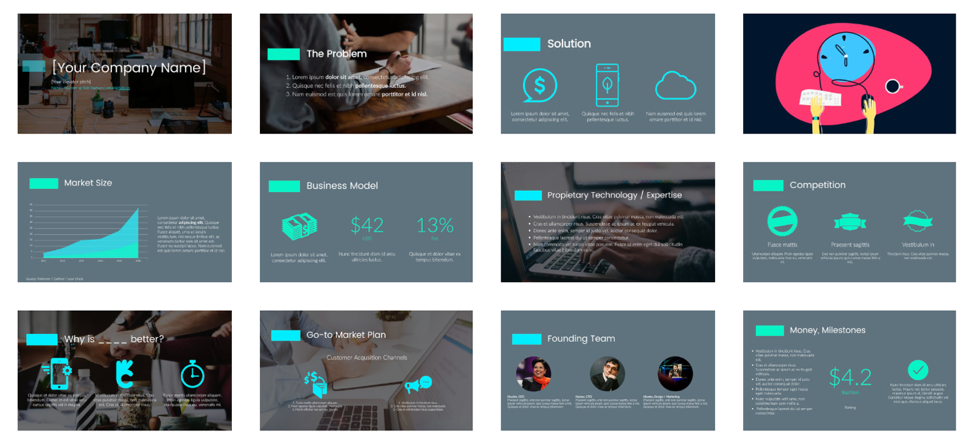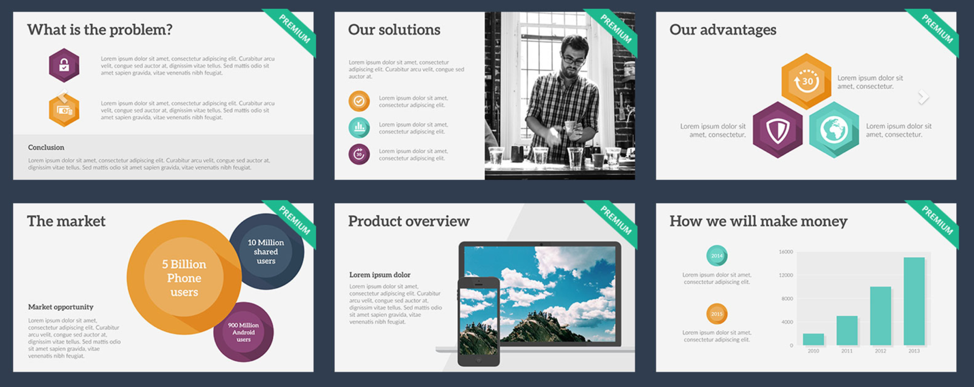The Vision Pitch – What it is and Why You Need It
The Vision Pitch – What it is and Why You Need It
Before we jump into your vision pitch, we need to start by re-visiting the customer lifecycle:
- Attract the Prospect
- Connect with the Prospect
- Convert them into a Customer
- Delight the Customer
When a prospect is attracted to you and indicates they want to begin the conversation, a new door opens, and you better make it count.
The irony of the “connect” phase is it sounds so innocent. “Let’s just connect, explain what we do, see if there’s a fit.” But after you get there, you often find yourself with a make-or-break opportunity to move the prospect down the sales funnel – if, and this is a big “if,” you can earn their trust.
Most companies have a multi-layered process from connect to close. There’s an initial point of contact, a call, or email where the business qualifies the prospect. If they determine the prospect to be a good fit, something further is scheduled. Maybe it’s an in-person “pitch meeting,” maybe a conference call, maybe it’s a demo over screen share. Regardless of the medium, it’s an invitation to be sold and you want to show up to the party prepared.
That’s why you need the Vision Pitch. The Vision Pitch is an organized visual representation of your company’s proven process that showcases what working with you would look like. If you’re in software, the Vision Pitch is usually your demo. If you run on EOS (the Entrepreneurial Operating System), your Vision Pitch is a sheet of paper with your process laid out concisely (don’t worry, we’ll show you how to do a little better than a one-sheet). If you work on Madison Avenue, your Vision Pitch is literally your pitch. And if you’re like the younger, naïve version of myself, you think the only Vision Pitch you need is you. No visuals, no process, just you.
Let’s go ahead and dispel that notion right now…
You Alone are NOT the Vision Pitch
When I was starting out in business, I hated the idea of systems and processes. I was always terrified to put my clients in a box. I love critical thought and problem-solving, and therefore decided every customer is unique, and solving their problems required a tailored approach. So, I would show up to a meeting, sit down, ask questions as they came to me, and let the prospect talk. I didn’t take notes, I used the “Yes, and…” improv technique to raise the enthusiasm, and I would leave most meetings with everyone happy, especially me, because I had just “won them over.”
Over time, many problems arose from this approach. Among them:
- Overpromising and under-delivering. This is a symptom of one person trying to play Superman and saying “yes” to everything. Once it came time to pass off what I had sold the client on to my team of Project Managers, many times it was hard to fulfill the requests at the time and budget that had been contracted.
- Making everybody love you is a terrible sales trait. Here’s why – when you’re solely trying to win people over, you make concessions to steal their hearts. You go down in price. You’re afraid to speak in specifics for fear that you may say something to jeopardize your position. You become focused on the wrong sale – winning them over as people as opposed to winning them as clients.
- Systems fuel growth. When I was trying to be the Vision Pitch myself, everything was on my shoulders. I loved that pressure. I thrived (for the most part) with those stakes. Unfortunately, I only have so much time in the day and if I want to scale my business beyond where I am, I need a blueprint that others can follow. Letting go of being the “only one” who can do everything will provide a much better foundation for growth.
- Organization + preparedness is more impressive than improvisation. When you show up to a meeting, make pleasantries, ask questions, and react based on the answers, you’re essentially improvising. If you’re at a comedy or jazz show, that’s great. When you’re trying to win over a customer, you can come off unorganized and unsure of what you do. Sales come from confidence, and you need to be confident in a process more so than yourself. An organized process with proven examples of success will showcase your value. You will also find your “pitch” for the process is stronger than when you’re improvising because…
- You’re not getting in the right reps. You know how comics go to small clubs in New York or LA and try out a bunch of different jokes for weeks on end to see what lands before they film their Netflix special? Sales people do the same thing. They constantly refine their approach based on how the market is reacting to what they’re offering. Practice makes you better. So, if every room you walk into, there’s a different conversation going on that’s reactive based on the first few questions that have been asked, you’re missing an opportunity to control your message and make it more effective over time. Work on repetition, and optimize accordingly.
One thing to keep in mind about the “I alone am the Vision” approach – we need to identify its strength: listening to the customer is incredibly important.
Providing the forum and flexibility to take what a prospect is saying and putting it into your Vision Pitch is an absolute must. We will get into how to do that the RIGHT way in a minute, but let’s make sure we take a second and identify that listening will be a significant aspect of the Vision Pitch.
What Goes into The Vision Pitch
The Vision Pitch is going to be one of your visual focal points in communicating your process and value. For many companies, this is systemizing a concept that’s currently being used informally. You know what you do, you can explain through the lens of a customer how your products/services improve their business, but you’re not organized. Let’s get everything in order so you and your team know exactly how to present your offerings to your target market.
The Vision Pitch Formula:
Credibility Builders → Questions for the Customer → Success Steps
Credibility Builders
Start by establishing credibility to your target market. Using customer success stories, testimonials, positive statistics, and/or a connection to their industry, introduce your company while giving your prospect reasons to feel comfortable.
Here’s an example of how an Invoicing Automation software company may lay out their credibility builders.
- In-Voicing is the first invoicing software to integrate with QuickBooks, FreshBooks, and NewBooks.
- We have over 2,100 companies using the platform and experienced a 92% renewal rate last year.
- One of our early customers, a Personal Injury Law Group similar to yours called “The Smith Firm,” reported that in 2 years using our software, they have saved over 200 admin hours that is now being used to bill clients.
You see, each of these makes you feel a little more comfortable with “In-voicing” if you’re a prospect.
Point 1 lets me know they are innovative and capable.
Point 2 makes me know I’m not part of their “proof of concept” phase.
And point 3 points to a real-life example that illustrates how the system provided a massive ROI for a company like mine.
They’ve got my attention. I’m officially interested.

Your Turn: Write out three aspects of your business/products/services that establish your credibility.

Questions for the Customer
While using the Vision Pitch keeps you in control of the message, it should not be one-sided. If we want to earn trust, we can’t just talk for an extended period of time, finish up and say “any questions?” We have to open our ear to the customer early in the process.
Everybody needs to feel heard. You should be asking questions, you just need to be asking the RIGHT questions, and not go back and forth trying to solve problems as they are presented. You should get at the core of what their problems are, what’s not working, and sniff out any important information needed. Listen, and take notes.
Using our fake invoicing automation company “In-Voicing” as an example, here are five questions they may use in their Vision Pitch presentation.
- How do you currently do invoicing?
- How much time and manpower do your invoices take?
- What does your “collections” process look like when customers get behind?
- In a perfect world, how would your invoicing operation work if time, money, and technology were not barriers?
- What was the tipping point in why you decided to explore a new direction?
These questions aim to get the customers to speak further about what they do not like about their current solutions. What the team at “In-Voicing” is listening for are problems that their software will solve because, in the next part of the Vision Pitch, they are going to hypothetically solve these problems for the prospect using their platform. You’re making them describe a dark world and focus on what’s wrong so you can paint the picture for them of what “right” would look like.
Your Turn: Write out five questions you want every prospect to answer so that you can take them through your “success steps” using their business as your example.
Success Steps
The Success Steps outline what a customer’s complete journey with you looks like. It should be no more than 10 steps and illustrate what being in business with your company looks like, from the moment of connection to the point of ROI.
Success Steps is where you begin to visualize the “perfect experience” for a prospect. Lay out a clear expectation of how things work, where the process is flexible, how long each step can/will take, and destroy the customer hesitations before they can even be brought up.
For each step, you may want to have an example on-hand to use as a go-to when additional questions are brought up. You are presenting a process and in an ideal world, you will walk the customer through their role in that process and they will just be amazed. But in the real world, they will be asking questions about how other companies have fared in a similar position. If you have an example off the top of your head at each step and can answer without hesitation, your confidence in the process will shine even brighter.
Going back to our fake friends at “In-Voicing,” their Success Steps may look as follows:
Step 1: A 60 Minute Demo that showcases how our system works, the meeting you are in today.
Step 2: A technical specialist will come in for an intensive week and either integrate or transfer your current accounting software into our platform.
Step 3: Our business development team conducts goal setting where we outline the amount of time we want to save and the percentage of collections we want to recover.
Step 4: Our training team hosts a weekly training session with an open Q&A for 90 Days.
Step 5: Our biz dev team comes in quarterly to review progress as it pertains to the goals.
Step 6: The one-year look back. We go through our goals, where we were when we started, and identify how much money has been saved in the year we’ve been working together. If it’s not more than 20%, we will give you three free months on the software and increase your business development meetings to a monthly schedule.
It’s important to note that presenting the Success Steps should not be a one-way street. You want the prospect putting themselves in the process, so make sure you keep your forum open to them to work out any specifics that may need to be clarified.
Try It: Write out the 10 (or less!) steps a customer has with you to find success. Additionally, add a Real-Life Example to each step in case it’s needed to be used as you present everything.
Start Making Decisions
No formula, book, or consultant knows your customers better than you. Never forget that and don’t be wishy-washy about it. You are the highest educated person/people in the world when it comes to knowing the people your business serves.
So, let’s start with them.
Knowing your customers as well as you do, assume you were starting over and approaching them for the first time. Consider their time, their location, their problems, and their goals.
Taking all of this into consideration, make some important decisions.
Decision 1: The Medium
Which of these forms of communication would be strongest given the factors above?
- An in-person meeting
- A conference call accompanied by a screen share
- A video conference with screen share capabilities
- A passive document/webpage with information they can read on their own time
- Other
Note that options 1-3 require may be more oral in their presentation, but all need to be accompanied by a visual. Everything needs to be laid out.
Decision 2: Timing
How long is this meeting going to last?
When you present a time for the meeting, you set an expectation. The EOS 90-Minute Meeting is very on-brand for their system, as it is very specific. It starts on time, it ends on time, and due to the 90-minute expectation, you know it covers a substantial amount of ground.
While that works well for EOS, what works for your customer? Do they need 30 minutes and for you to be quick and to the point? Is an hour enough time? Should you go for 2 hours?
Remember, you’re trying to earn trust, not necessarily complete the sale. Give yourself enough time, but don’t go so long that you turn off your target customer.
And whatever you decide, include the length while scheduling the meeting to set the expectation. A good follow-up after a meeting is scheduled might read:
“Great. Our next step is a 30-minute screen share that will start at exactly 8:00am and end right at 8:30. Please be on time and I will present everything you need in just 30 minutes.”
Also note, if you decide to take a passive approach with your Vision Pitch and provide literature or collateral for a prospect to dig into on their own time, outline the timing of your process.
Something like:
“Thank you for connecting with us. Attached you will find a layout of the process we have used to help over 200 businesses increase their revenue. Please take a look over the next seven business days and if you’re ready to begin, click here to get started. If you have any additional questions, a representative will reach out after seven business days to help answer any follow-ups.”
Decision 3: The Visuals
Are you ready to bring it all home with a beautiful presentation? Great, let’s get to it!
Knowing your medium means knowing your setting. Think of the factors of “where” that need to be in play. When you’re presenting in front of a screen, you don’t want to put a giant amount of text on your presentation or every person in the room will tune you out and try to read what’s behind you. If your visual is drawn throughout the course of the meeting, make sure you have a whiteboard or large paper on the wall at your meeting space. If your presentation requires technology, cover your bases before the meeting starts.
Knowing your timing means knowing your Vision Pitch’s length. If you feel you need 90 full minutes, you need 90 minutes worth of a visual. That doesn’t mean you need to build a 100-page keynote, it just means to stay consistent with the expectation that you have set.
The big rule of thumb is less is more. Clear, concise words and images. As little text as you can enter. See a few design concepts below that do a good job of keeping everything in the presentation tight.


This is an Obstacle that’s a little larger than you probably realize. The best process for getting this built is to start with your presentation in its barest form and fill things out from there. You’re only at the beginning of conceptualization, so hone your pitch, practice on your trusted friends and partners. Get it to a place where you feel comfortable with every word that comes out of your mouth, and THEN throw it on your Obstacles List. This will make your final Vision Pitch more impactful, allowing the design to support the concept and not vice versa.
To recap…
- Create the outline for your Vision Pitch
- Three Credibility Builders
- Five Questions
- Ten (Or Less) Success Steps
- Decide…
- Your medium for the presentation
- The timing of your presentation
- The desired visuals for your presentation
Put it all together. Practice in the mirror and on friends. Once it’s perfect, perform in front of your creative team and put together the necessary design support to amplify your message.
Good luck!



